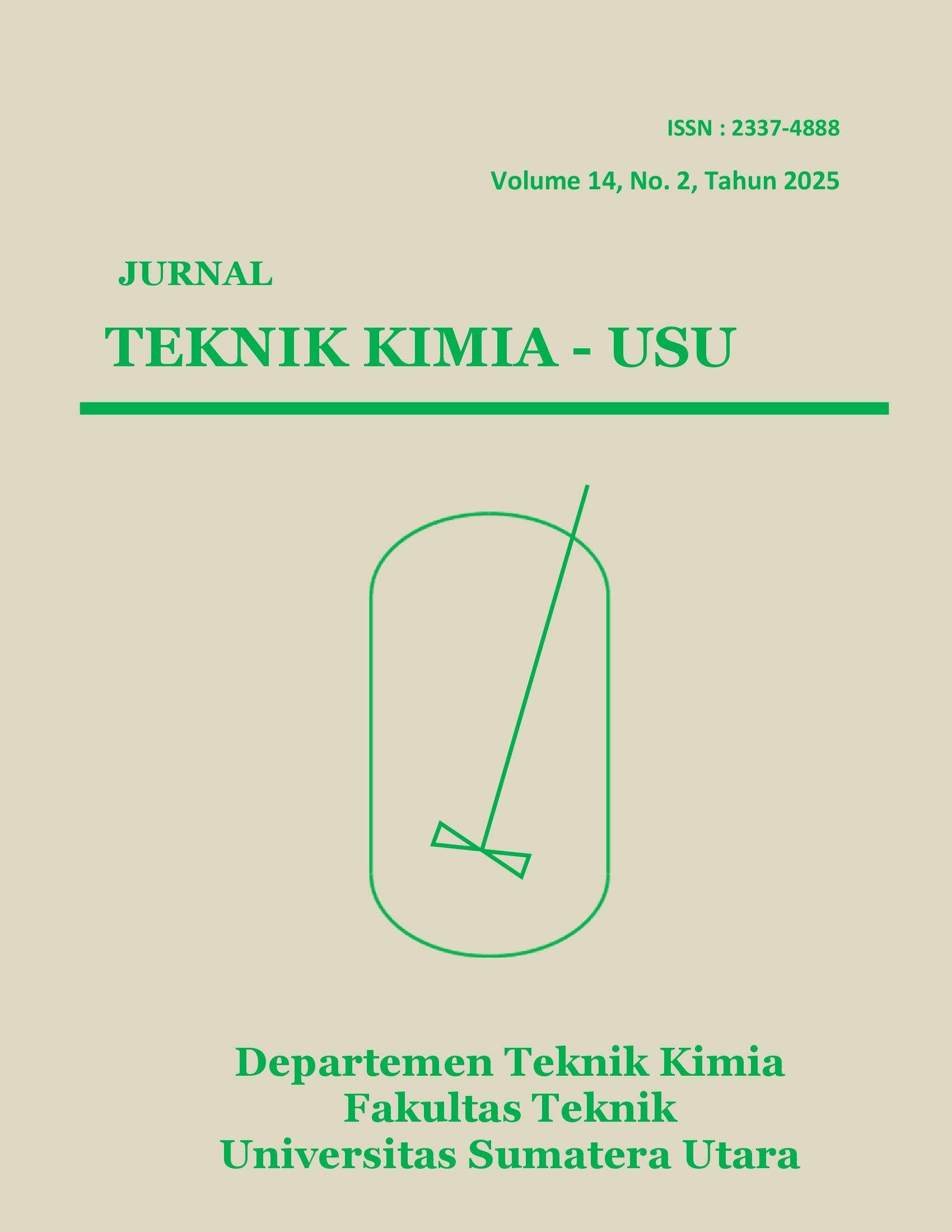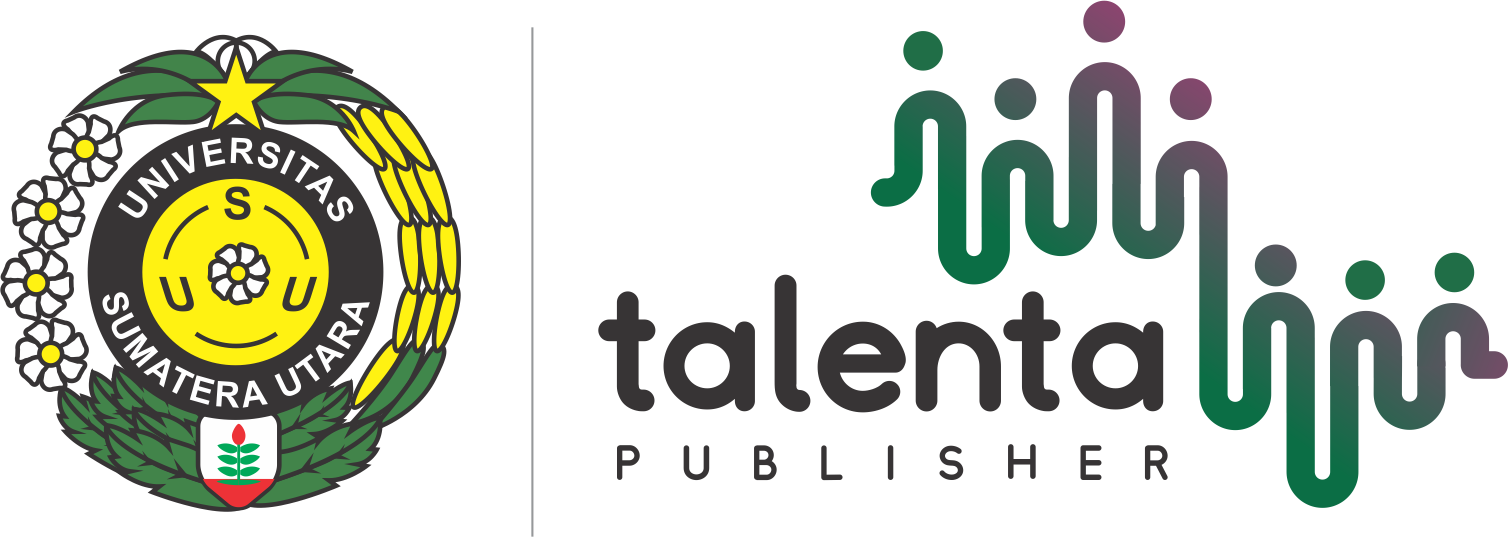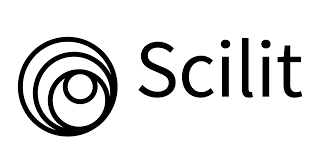Solvent-Free Microwave Extraction: Analisis Fitokimia Minyak Atsiri Daun Ruku-Ruku (Ocimum tenuiflorum, L.) dan Aktivitas Antibakteri terhadap Escherichia coli
DOI:
https://doi.org/10.32734/jtk.v14i2.20768Keywords:
Ocimum tenuiflorum, L., phytochemical compound, solvent-free microwave extraction, antibacterial activityAbstract
Holy basil (Ocimum tenuiflorum, L.) is one of the aromatic herbs that grows in empty or abandoned areas. Previous studies used conventional methods, including maceration and hydrodistillation, to extract Ocimum tenuiflorum, L. Genetic variation, plant phenology, geographical conditions, and extraction techniques affect the yield and variability of essential oil phytochemical composition. Here in, we report essential oil extraction of Ocimum tenuiflorum green and purple using solvent-free microwave extraction. The yield calculation obtained from purple and green O. tenuiflorum essential oils was 2.25 and 2.17%, respectively. GCMS data shows that the phytochemical compounds in Ocimum tenuiflorum essential oils, purple and green leaves, are dominated by sesquiterpene and phenylpropene groups. In the essential oil of purple Ocimum tenuiflorum leaves, the major phytochemical compound components are methyl eugenol, β-Caryophyllene, and Germacrene-D. Antibacterial activity showed that Ocimum tenuiflorum purple essential oils a more preeminent effect against Escherichia coli than green.
Downloads
References
P. L. Saran, V. Tripathy, A. Saha, K. A. Kalariya, M. K. Suthar, and J. Kumar, “Selection of superior Ocimum sanctum L. accessions for industrial application,” Ind. Crops Prod., vol. 108, no. July, pp. 700–707, 2017.
D. Singh and P. K. Chaudhuri, “A review on phytochemical and pharmacological properties of Holy basil (Ocimum sanctum L.),” Ind. Crops Prod., vol. 118, no. November 2017, pp. 367–382, 2018.
T. P. C. Ezeorba, I. F. Chukwuma, R. O. Asomadu, W. F. C. Ezeorba, and N. O. Uchendu, “Health and therapeutic potentials of Ocimum essential oils: a review on isolation, phytochemistry, biological activities, and future directions,” J. Essent. Oil Res., vol. 36, no. 3, pp. 271–290, 2024.
N. Khodaei, M. M. Nguyen, A. Mdimagh, S. Bayen, and S. Karboune, “Compositional diversity and antioxidant properties of essential oils: Predictive models,” Lwt, vol. 138, no. July 2020, 2021.
T. Suanarunsawat, G. Anantasomboon, and C. Piewbang, “Anti-diabetic and anti-oxidative activity of fixed oil extracted from Ocimum sanctum L. leaves in diabetic rats,” Exp. Ther. Med., vol. 11, no. 3, pp. 832–840, 2016.
V. S. Rana and M. A. Blazquez, “Essential Oil Composition of the Aerial Parts of Five Ocimum species from Western India,” J. Essent. Oil-Bearing Plants, vol. 18, no. 5, pp. 1234–1241, 2015.
M. L. Bhavya, A. G. S. Chandu, and S. S. Devi, “Ocimum tenuiflorum oil, a potential insecticide against rice weevil with anti-acetylcholinesterase activity,” Ind. Crops Prod., vol. 126, no. August, pp. 434–439, 2018.
A. Piras et al., “Ocimum tenuiflorum L. and Ocimum basilicum L., two spices of Lamiaceae family with bioactive essential oils,” Ind. Crops Prod., vol. 113, no. January, pp. 89–97, 2018.
A. Chaudhary, S. Sharma, A. Mittal, S. Gupta, and A. Dua, “Phytochemical and antioxidant profiling of Ocimum sanctum,” J. Food Sci. Technol., vol. 57, no. 10, pp. 3852–3863, 2020.
H. A. Yamani, E. C. Pang, N. Mantri, and M. A. Deighton, “Antimicrobial activity of Tulsi (Ocimum tenuiflorum) essential oil and their major constituents against three species of bacteria,” Front. Microbiol., vol. 7, no. MAY, pp. 1–10, 2016.
S. N. Lam, G. D. Neda, and M. S. Rabeta, “The anticancer effect of ocimum tenuiflorum leaves,” Food Res., vol. 2, no. 2, pp. 154–162, 2018.
A. R. U. N. D. E. V. S. Sharma, I. N. K. Aur, S. O. A. Ngish, A. L. T. Hakur, S. A. S. Ania, and A. M. S. Ingh, “Comparative phytochemistry, antioxidant, antidiabetic, and anti-inflammatory activities of traditionally used Ocimum basilicum L. Ocimum gratissimum L., and Ocimum tenuiflorum L.,” vol. 103, no. 2, pp. 131–142, 2022.
K. Sneha et al., “Antimicrobial and Larvicidal Activities of Different Ocimum Essential Oils Extracted by Ultrasound-Assisted Hydrodistillation,” Molecules, vol. 27, no. 5, pp. 1–9, 2022.
A. P. Raina, A. Kumar, and M. Dutta, “Chemical characterization of aroma compounds in essential oil isolated from ‘Holy Basil’ (Ocimum tenuiflorum L.) grown in India,” Genet. Resour. Crop Evol., vol. 60, no. 5, pp. 1727–1735, 2013.
N. Khajehie, M. T. Golmakani, M. Eblaghi, and M. H. Eskandari, “Evaluating the effects of microwave-assisted hydrodistillation on antifungal and radical scavenging activities of Oliveria decumbens and Chaerophyllum macropodum essential oils,” J. Food Prot., vol. 80, no. 5, pp. 783–791, 2017.
Y. Variyana and Y. Susanti, “Optimasi Ekstraksi dari capsicum frutescens L dengan Microwave-Assisted Soxhlet Extraction (MASE) Menggunakan Response Surface Methodology (RSM),” JRST (Jurnal Ris. Sains dan Teknol., vol. 5, no. 2, p. 131, 2022.
R. Manouchehri, M. J. Saharkhiz, A. Karami, and M. Niakousari, “Extraction of essential oils from damask rose using green and conventional techniques: Microwave and ohmic assisted hydrodistillation versus hydrodistillation,” Sustain. Chem. Pharm., vol. 8, no. November 2017, pp. 76–81, 2018.
H. S. Kusuma and M. Mahfud, “Preliminary study: Kinetics of oil extraction from basil (Ocimum basilicum) by microwave-assisted hydrodistillation and solvent-free microwave extraction,” South African J. Chem. Eng., vol. 21, pp. 49–53, 2016.
B. L. Sampaio, R. Edrada-Ebel, and F. B. Da Costa, “Effect of the environment on the secondary metabolic profile of Tithonia diversifolia: A model for environmental metabolomics of plants,” Sci. Rep., vol. 6, no. June, pp. 1–11, 2016.
L. Yang et al., “Seasonal dynamics of metabolites in needles of Taxus wallichiana var. mairei,” Molecules, vol. 21, no. 10, 2016.
M. D’Auria, M. Mecca, and Maria Roberta Bruno and Luigi Todaro, “Extraction Methods and Their Influence on Yield When Extracting Thermo-Vacuum-Modified Chestnut Wood,” Forests, vol. 73, no. 12, pp. 1–13, 2021.
E. Gil-Martín, T. Forbes-Hernández, A. Romero, D. Cianciosi, F. Giampieri, and M. Battino, “Influence of the extraction method on the recovery of bioactive phenolic compounds from food industry by-products,” Food Chem., vol. 378, 2022.
Downloads
Published
Issue
Section
License
Copyright (c) 2025 Jurnal Teknik Kimia USU

This work is licensed under a Creative Commons Attribution-ShareAlike 4.0 International License.

















